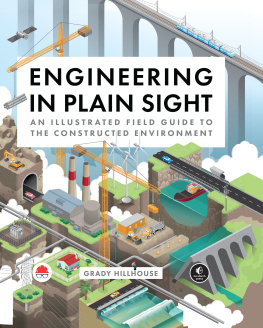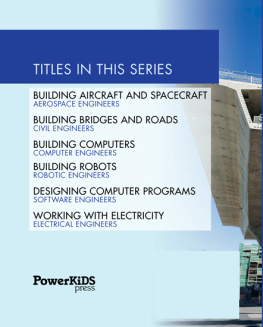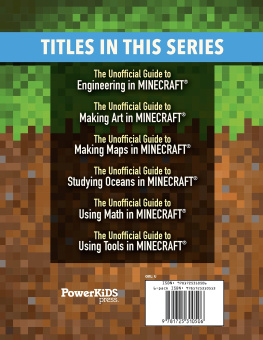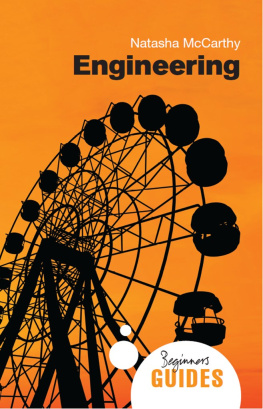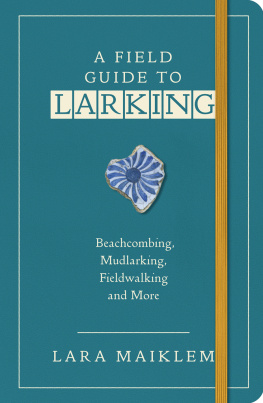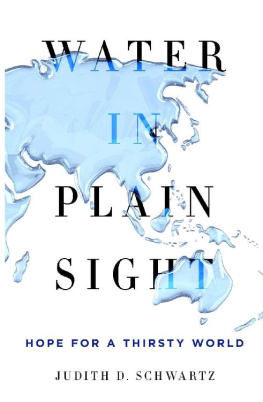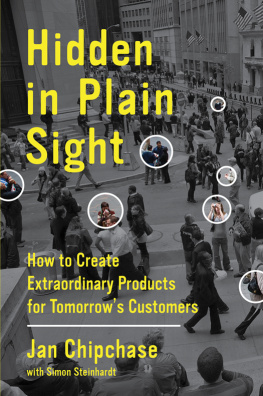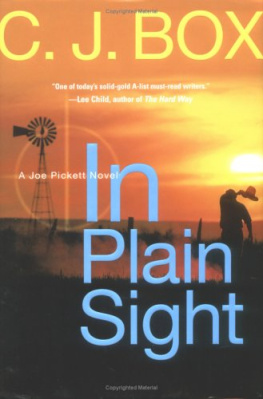Engineering in Plain Sight
An Illustrated Field Guide to the Constructed Environment
by Grady Hillhouse
Engineering in Plain Sight. Copyright 2022 by Grady Hillhouse.
All rights reserved. No part of this work may be reproduced or transmitted in any form or by any means, electronic or mechanical, including photocopying, recording, or by any information storage or retrieval system, without the prior written permission of the copyright owner and the publisher.
First printing
26 25 24 23 22 1 2 3 4 5
ISBN-13: 978-1-7185-0232-1 (print)
ISBN-13: 978-1-7185-0233-8 (ebook)
Publisher: William Pollock
Managing Editor: Jill Franklin
Production Manager: Rachel Monaghan
Developmental Editor: Jill Franklin
Production Editor: Rachel Monaghan
Illustration and Cover Design: MUTI
Technical Reviewers: Thomas Overbye, Robert Weller, Laurence Rillet, Brian Gettinger, John Sobanjo, Erol Tutumluer, Tina McMartin, Jennifer Elms, and Brandon White
Interior Design and Composition: Maureen Forys, Happenstance Type-O-Rama
Proofreader: Audrey Doyle
For information on distribution, bulk sales, corporate sales, or translations, please contact No Starch Press, Inc. directly at info@nostarch.com or:
No Starch Press, Inc.
245 8th Street, San Francisco, CA 94103
phone: 1.415.863.9900
www.nostarch.com
Library of Congress Control Number: 2022013814
No Starch Press and the No Starch Press logo are registered trademarks of No Starch Press, Inc. Other product and company names mentioned herein may be the trademarks of their respective owners. Rather than use a trademark symbol with every occurrence of a trademarked name, we are using the names only in an editorial fashion and to the benefit of the trademark owner, with no intention of infringement of the trademark.
The information in this book is distributed on an As Is basis, without warranty. While every precaution has been taken in the preparation of this work, neither the author nor No Starch Press, Inc. shall have any liability to any person or entity with respect to any loss or damage caused or alleged to be caused directly or indirectly by the information contained in it.
To Crystal
Introduction
In mid-2009, as the world was just escaping the most severe economic meltdown since the 1930s, I was escaping university with an undergraduate liberal arts degree and not a single prospect for gainful employment. Rather than take my chances in the dreadful job market, I decided to spend a little more time (and a lot more money) on my education. Facing the difficult reality that a university degree could not guarantee a job, I diligently cross-referenced my various interests against their occupational prospects to refocus my career path in a more dependable and less ambiguous direction. I settled on civil engineering, a subject about which I knew almost nothing but that seemed both exciting and responsible. Incredibly, I was accepted into my top choice for graduate school and started my studies that fall.
Once I had worked through the basic math and science classes required to catch up to my graduate-level classmates, I began the engineering coursework. I have always been generally curious about science, technology, and how things work. Still, nothing could have prepared me for the remarkable transformation of perspective I would receive during the rest of my studies. Structural design classes had me staring at every beam and column to be spotted in each new building I visited. Circuits labs pointed out the details and complexities of electric transmission lines and substations. Stormwater engineering lectures compelled me to notice every drain, manhole, channel, and detention basin while biking or driving around town. Each and every class was like turning on a lamp to illuminate some innocuous part of the constructed environment that I had never noticed before. I was captivated.
I finished my degree not only with a job but also with an entirely new way of looking at the world. It didnt take long for that enthusiasm and excitement about infrastructure to overflow into my personal life, including my hobby YouTube channel. What started as a way to share my woodworking projects with other makers and craftspeople slowly turned into an outlet for introducing topics in engineering to the world. Now I produce educational videos full-time, and Practical Engineering has millions of viewers each month.
Even the most unexceptional parts of the built environment are monuments to the solutions to hundreds of practical engineering problems. Understanding even a small subset of those challenges and their resolutions had the power to instill astonishment and wonder in me, and I never stopped feeling that way. Now my entire life is essentially a treasure hunt for all the interesting little details of the constructed world. My spontaneous stops at each dam and bridge for a photograph or a better look drive my wife a little crazy on road trips. I regularly lose my train of thought on walks when noticing some new or different piece of infrastructure. And there is a tiny part of my brain that is dedicatedno matter where I am or what Im doingto following the path that stormwater will take as it runs off along the ground. Engineering opened my eyes to the infrastructure that surrounds and supports our modern lives. If any of that eagerness comes across in this book, I have succeeded.
This is not a comprehensive field guide. Infrastructure takes a myriad of shapes and forms that vary around the world. This book focuses on the United States, but constructed works can look quite different even between states, counties, and cities. It wouldnt be practical to try to document them all. Plus, it would ruin the fun. Part of the joy of infrastructure spotting is using your detective skills to deduce the purpose of random bits and bobs as you come across them. I hope what follows can ignite that joy and further your journey as an enthusiastic beholder of the constructed environment.
Grady Hillhouse
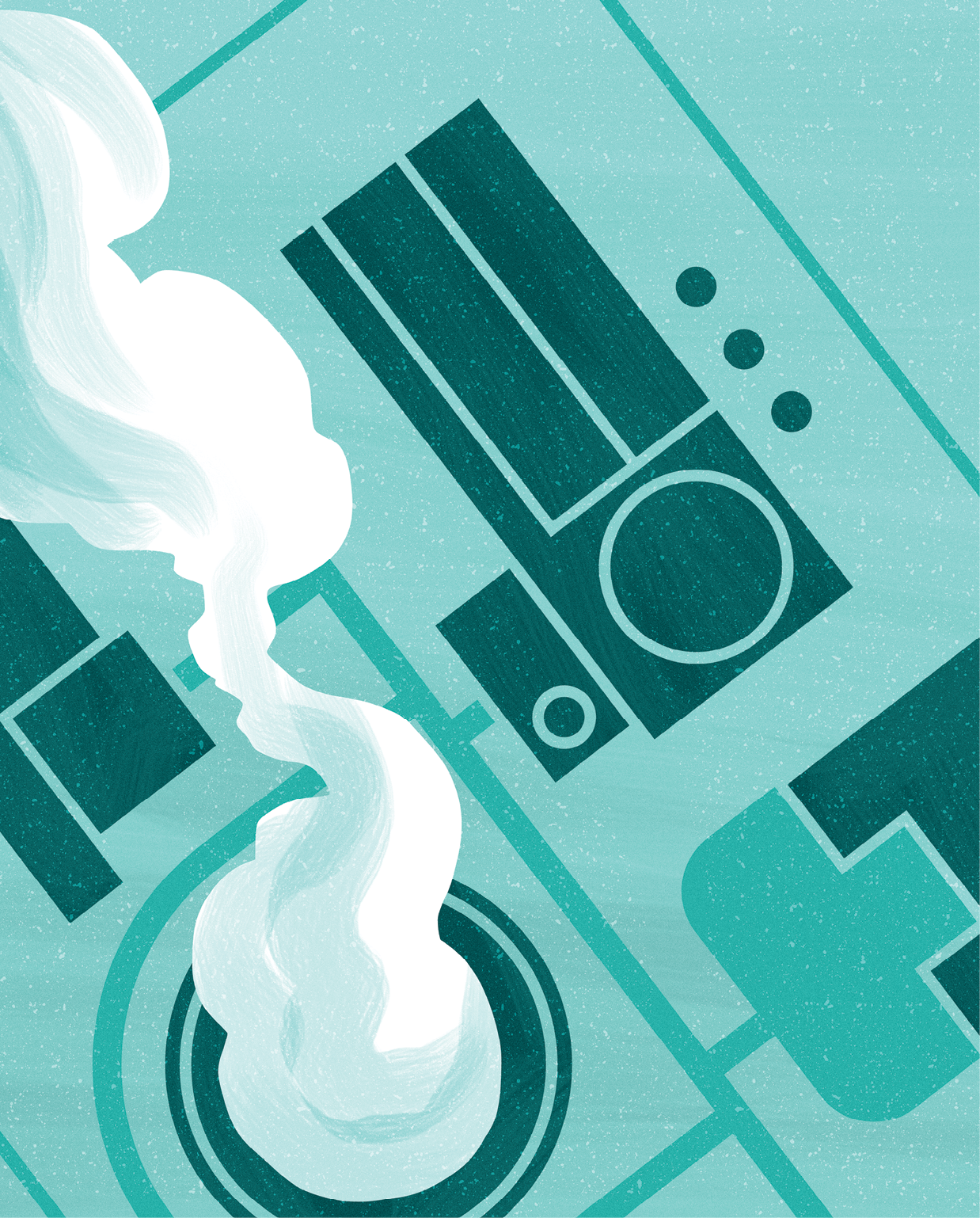
Electrical Grid
Introduction
Harnessing the power of electricity is one of humanitys greatest achievements. What was a luxury 100 years ago is now a critical resource for the safety, prosperity, and well-being of nearly everyone. In the not-too-distant past, manpower and horsepower were practically the only powers. Hard work was accomplished through the strength of living beings. Its no wonder we humans have sought to take control of energies beyond our own bodies. These days, energy gives life to almost every aspect of the contemporary world, enabling our most basic physiological needs to our most cutting-edge technologies.
Depending on how it is harnessed, stored, distributed, and used, energy can take many forms. On the Earth, we can trace nearly all our energy back to the sun. Wind and waves are created by heating of the Earths atmosphere. Solar light can be harnessed directly. Even fossil fuels like gasoline got their energy from the sun. Prehistoric plants captured this solar power through photosynthesis and were buried over millions of years, only to be tapped into by wells, extracted, refined, and exploded in engines, releasing the suns heat (along with many other foul byproducts) back to the planet again. Humans do a lot of converting of energy from one form to another for convenience and practicality, but nothing compares to electricity, which makes having a personal source of power possible for nearly everyone.

